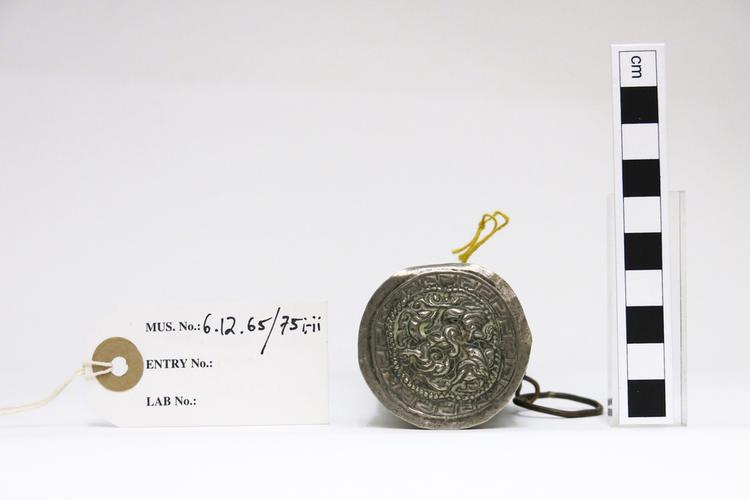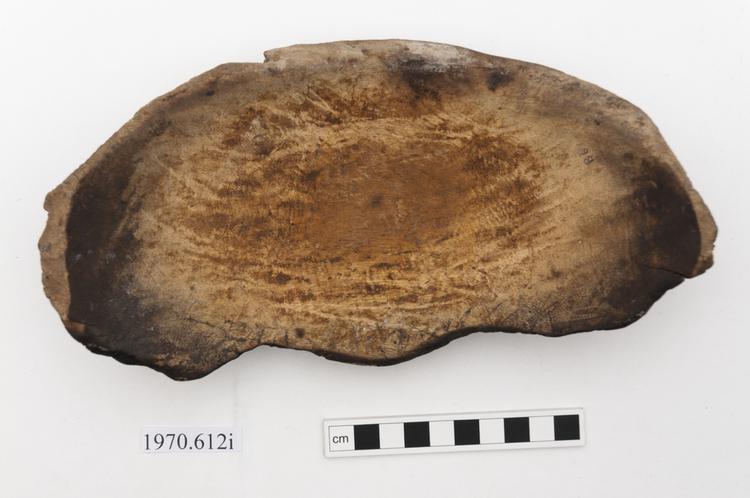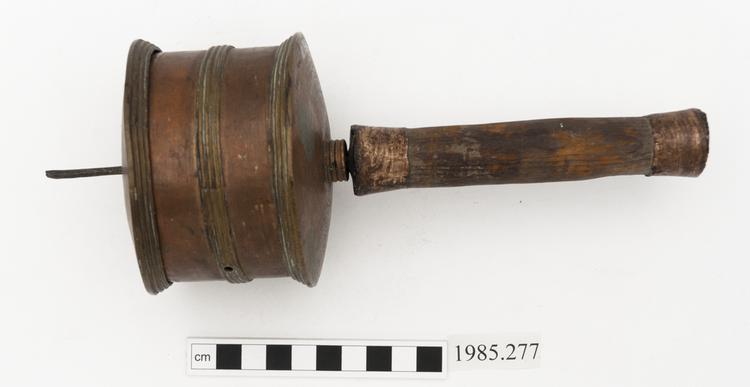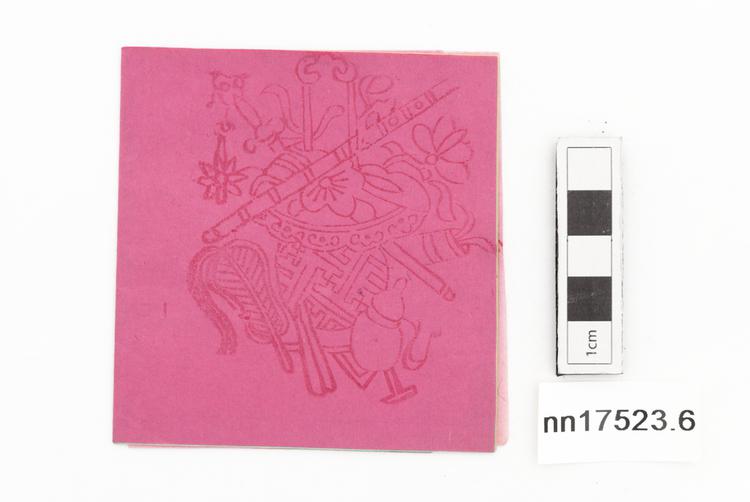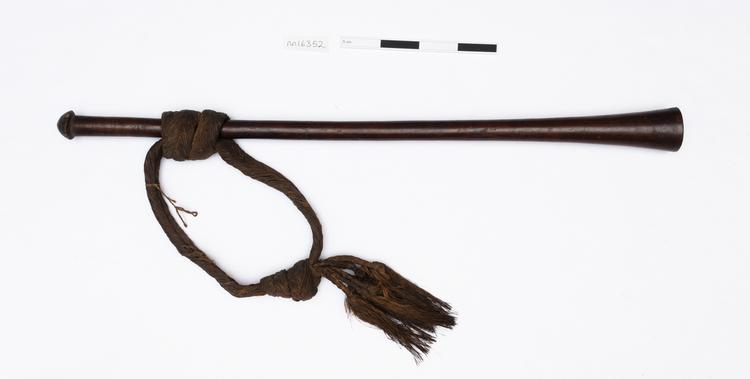
Tapering pole club flaring to a flattened head, with a stepped and domed pommel. The club has an extensive fibre binding made from rolled and plaited coconut fibre.
Pole Club, Western Santo island, Vanuatu, Eastern Melanesia Due to its simplicity, the club is among the most universal of human tools, but Vanuatu has the very unusual distinction of being one of the only places on earth where some social groups (some of the peoples of Malakula) produced no clubs for fighting at all. This highly refined flaring pole club, however, comes from the western part of Santo, Vanuatu’s largest island. Like clubs used further to the east in Polynesia, pole clubs like this were used by the ni-Vanuatu as part of a complex and sophisticated martial art which has largely fallen into obscurity. They were wielded both one-handed and two-handed, and men trained intensively to master a number of different offensive and defensive moves. The thick doubled rope of split, plaited and wrapped banana leaf fibres (Musa spp.) has parallels in the wrist-loops attached to Polynesian clubs, but this larger loop was actually used as a shoulder strap for the man to carry the club down the side of his chest. Some historical accounts record Santo men throwing their clubs backwards over their shoulders in an arc that slipped the loop down their arm and brought the weapon into their hand, ready for use at a moment’s notice. Given the importance of ambush and surprise attack in most Pacific forms of warfare, learning such a technique made good sense. Hardwood, banana fibre. Late 19th Century. Provenance unknown.
fighting



